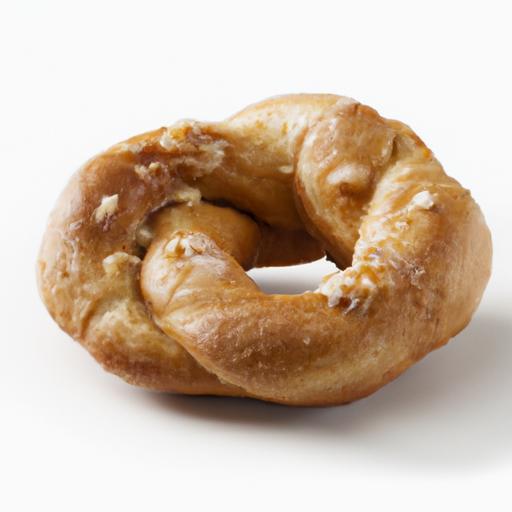There’s nothing quite like the anticipation of baking a perfect batch of cookies or bread-until you find yourself battling with stubbornly sticky dough that clings like a mischievous glue. Whether you’re a seasoned baker or a kitchen newbie, sticky dough woes can throw a wrench in your culinary plans and test your patience. But fear not! Before you toss that gooey glob aside, let’s explore some quick, practical fixes that will transform your sticky mess into a smooth, workable dough. Ready to rescue your recipe and keep your baking dreams alive? Let’s dive into the sticky situation and find out how to turn it around!
Sticky Dough Woes? Quick Fixes to Save Your Recipe!
Sticky dough woes? Quick fixes to save your recipe! Whether you’re baking a rustic loaf or crafting delicate pastries, encountering sticky dough is a frustrating but common hurdle. The secret to dough mastery lies in understanding why your dough clings stubbornly to your hands and kitchen surface, and knowing the essential tweaks and hacks that can effortlessly transform its texture. Let’s dive deep into moisture control and ingredient adjustments that will make your dough silky, manageable, and bake-ready every time.
Prep and Cook Time
Preparation: 15 minutes | Resting/Proofing: 1-2 hours (depending on dough type) | Baking: 20-40 minutes
Yield
Makes 4 medium-sized rustic loaves or 12 dinner rolls
Difficulty Level
Medium – A perfect balance of art and science for everyday bakers
Ingredients
- 4 cups all-purpose flour, sifted
- 1 ½ cups lukewarm water (110°F/43°C)
- 2 tsp active dry yeast
- 1 tbsp granulated sugar
- 2 tsp kosher salt
- 1 tbsp olive oil (optional, for moisture control)
- Additional flour for dusting as needed
Instructions
- Activate yeast: In a small bowl, dissolve the sugar in lukewarm water. Sprinkle the yeast on top and let it bloom for 5-10 minutes until foamy and fragrant.
- Combine dry ingredients: In a large mixing bowl, whisk together the sifted flour and kosher salt to evenly distribute.
- Form the dough: Pour the activated yeast mixture and olive oil (if using) into the flour. Stir gently with a wooden spoon or dough hook until a shaggy dough forms.
- Knead the dough: Lightly flour your work surface. Transfer the dough and knead by hand for 8-10 minutes until smooth and elastic, adding minimal extra flour. If the dough feels too sticky, sprinkle flour a teaspoon at a time-avoid adding too much, which can dry the dough out.
- First rise: Place the dough in a lightly oiled bowl, cover with a damp cloth or plastic wrap, and let it rise in a warm spot for 1 to 2 hours, or until doubled in size.
- Shape and rest: Punch down the risen dough gently, divide as needed, and shape into loaves or rolls. Let them rest for 15-20 minutes on a floured surface before baking.
- Bake to perfection: Preheat your oven to 425°F (220°C). Slash the tops for steam release, then bake loaves for 25-30 minutes, or until golden and hollow-sounding when tapped. Rolls will take 15-20 minutes.
- Cool completely: Transfer baked goods to a wire rack and cool before slicing to prevent doughy textures.
Tips for Rescue and Moisture Control
- Understanding hydration: Dough stickiness often stems from excess moisture or insufficient gluten development. Adjust water by up to 10% depending on flour brand and humidity.
- Flour choice: Using bread flour with higher protein content strengthens gluten, reducing sticky textures and improving chewiness.
- Smart dusting: Use just enough flour on hands and surfaces to prevent sticking without altering dough balance. Cornmeal or semolina also works wonderfully for dusting with added texture.
- Rest times: Longer autolyse or rest periods encourage gluten formation, lessening stickiness naturally.
- Temperature matters: Warm environments accelerate yeast activity, potentially increasing dough moisture. Adjust water temperature or increase flour accordingly.
- Hydration hacks: Try incorporating oil or a small amount of softened butter for moisture binding without stickiness.
Serving Suggestions
Slice fresh rustic loaves and serve with creamy butter, aromatic herb oils, or spread tangy cheeses and honey for a perfect breakfast or appetizer. Toasted crust pieces make excellent dips for warm soups or savory stews, while soft rolls shine alongside festive roasts garnished with fresh rosemary sprigs or flaked sea salt.

| Nutrient | Per Serving |
|---|---|
| Calories | 220 kcal |
| Protein | 6 g |
| Carbohydrates | 45 g |
| Fat | 2 g |
For more in-depth tips on managing dough consistency, check out our guide to perfect dough texture. Learn from experts at King Arthur Baking’s professional resources to master your baking craft.
Q&A
Q&A: Sticky Dough Woes? Quick Fixes to Save Your Recipe!
Q1: Why is my dough so sticky?
A1: Sticky dough can be a result of too much moisture, not enough flour, or even high humidity in your kitchen. Overactive hydration means the dough doesn’t have enough dry ingredients binding it together, making it clingy and tough to handle.
Q2: Can I just add more flour to fix sticky dough?
A2: Yes-but with a caveat. Gradually sprinkle in small amounts of flour, about a tablespoon at a time, and knead gently until the dough just comes together. Adding too much flour can dry out your dough, resulting in a dense, tough final product.
Q3: Is sticky dough always a bad thing?
A3: Not necessarily! Some dough recipes, like ciabatta or brioche, intentionally feature a wetter, stickier texture to create a light, airy crumb. The trick is managing the stickiness to make it workable-not eliminating it entirely.
Q4: What are quick tricks to handle sticky dough without adding flour?
A4: Dust your hands and work surface with flour or lightly oil them to prevent sticking. Using a bench scraper is also a game changer-it helps lift and fold sticky dough with minimal mess.
Q5: What if my dough is sticky because of humidity?
A5: On humid days, doughs tend to absorb moisture from the air. Try refrigerating your dough for 20-30 minutes to firm it up before working with it. This also helps relax the gluten, making it easier to shape.
Q6: How do I fix sticky dough that has already risen and is unshapable?
A6: Lightly flour your hands and the counter, then gently fold the dough a few times to tighten the gluten structure without deflating it too much. If it’s too wet, you can do a quick “stretch and fold” in the bowl to develop strength before shaping.
Q7: Can I use sticky dough directly without fixing it?
A7: It depends on the recipe. For rustic breads or pizza doughs that benefit from high hydration, handling sticky dough carefully is key. But for cookies or pastries, sticky dough usually needs some adjustment to prevent spreading or structural collapse during baking.
Q8: How can I prevent sticky dough in future batches?
A8: Measure ingredients precisely, use a kitchen scale for accuracy, and adjust flour quantities based on flour type and room conditions. Also, try adding liquids slowly-better to start with less and add more as needed.
With these tips, sticky dough troubles won’t throw a wrench in your baking plans. Embrace the softness, master the handling, and soon you’ll be creating delicious, beautifully textured treats every time!
Key Takeaways
Conquering sticky dough doesn’t have to feel like a baking battle lost before it begins. With these quick fixes in your toolkit-whether it’s a sprinkle of flour, a touch of chilling time, or a shift in hydration-you’ll transform that stubborn mess into a smooth, workable masterpiece. Remember, every dough has its quirks, but with a little patience and these handy hacks, you’ll be well on your way to baking bliss. So next time sticky dough threatens your recipe, don’t stress-just tweak, knead, and bake your way to delicious success!


